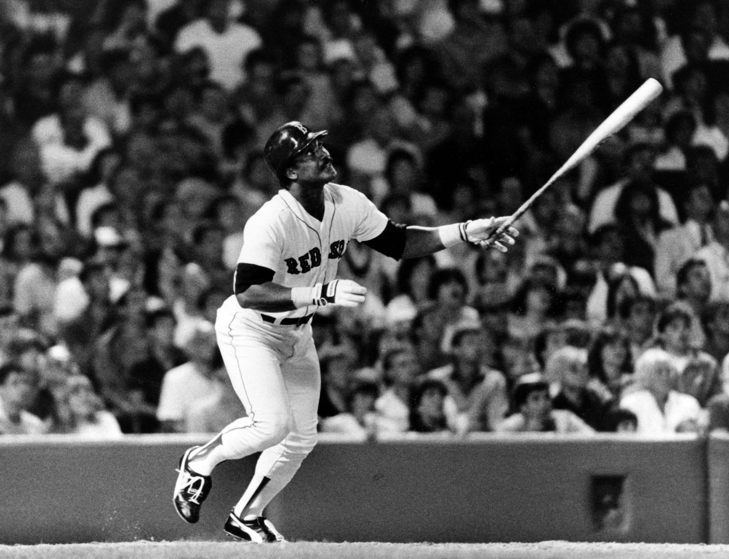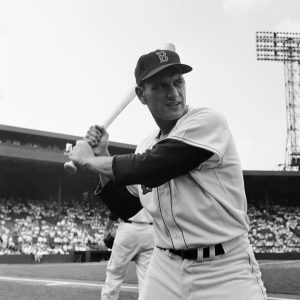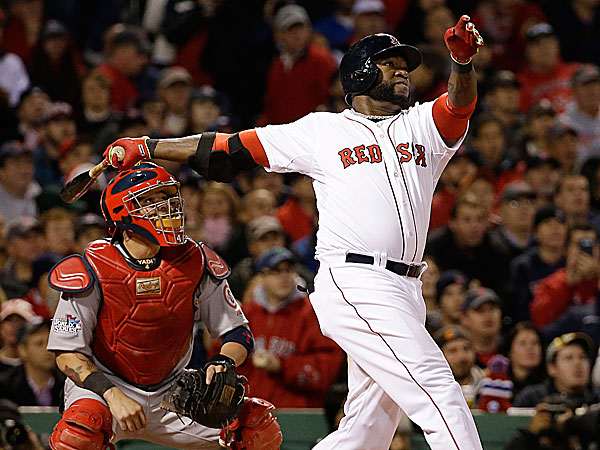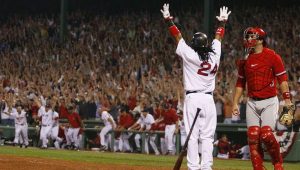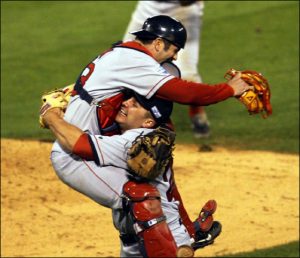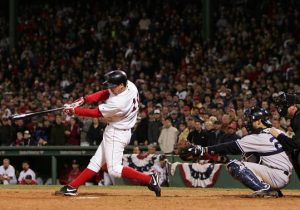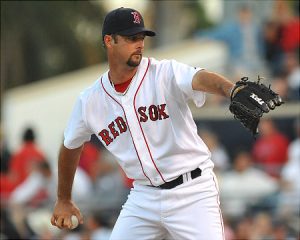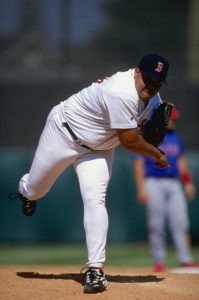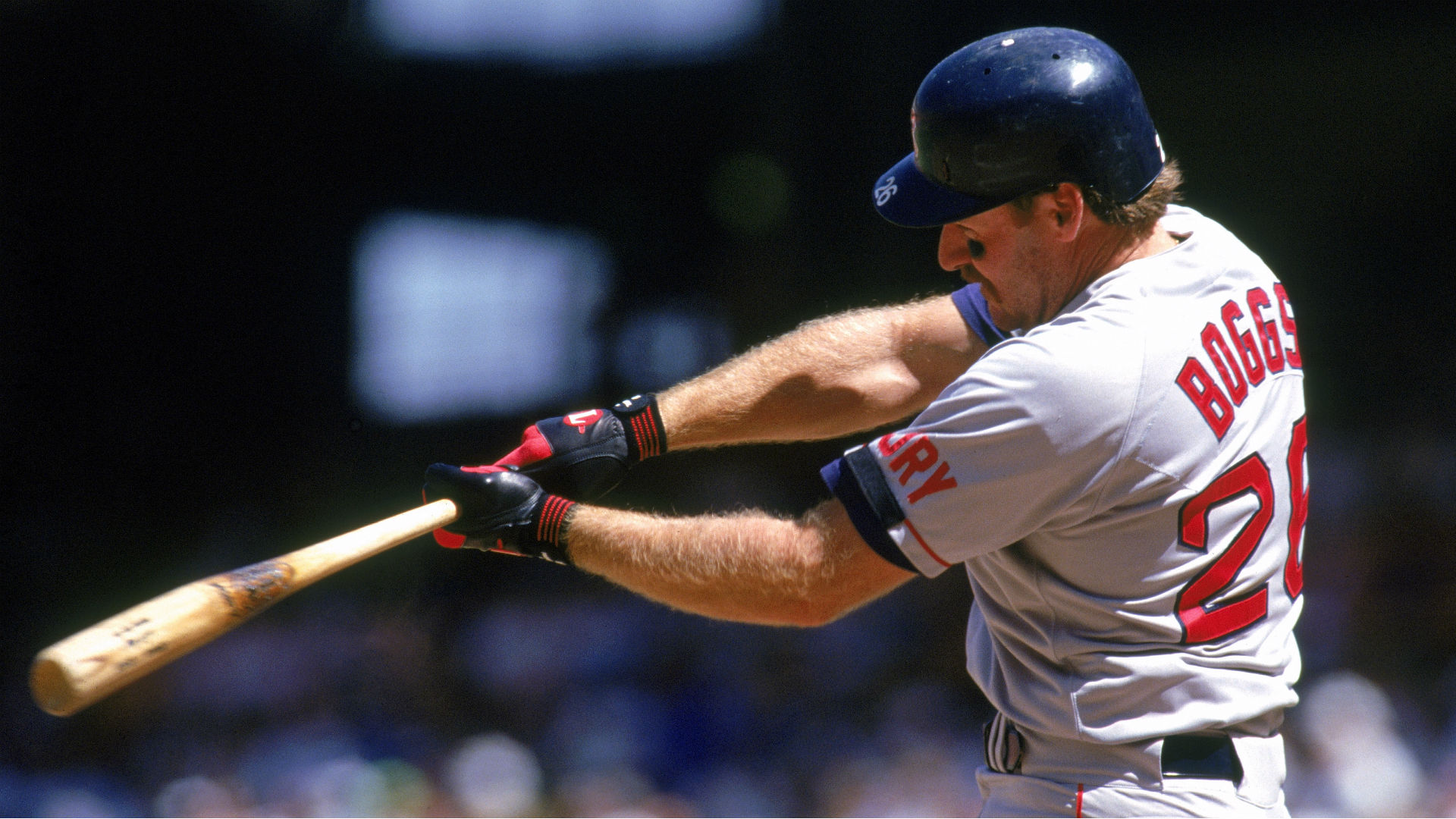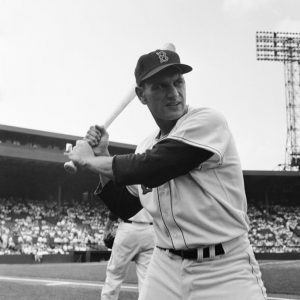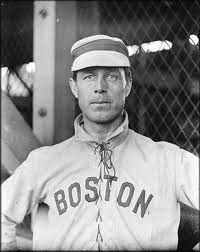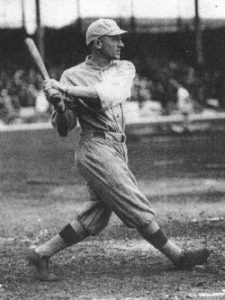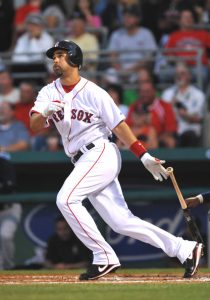Following up probably the easiest portion of these articles, numbers one through ten comes the third installment in this series of articles. This set of numbers, 11 through 15, won’t be quite so obvious. This grouping, however, does include one retired number and one current player.
Number 11 – Frank Malzone
Frank Malzone was an eight-time All-Star, spending 11 of his 12 seasons in Boston. Malzone made two All-Star Games in both 1959 and 1960, when Major League Baseball temporarily held two per season. Malzone was an excellent fielder, winning three consecutive Gold Gloves to begin his career. He also drove in 103 runners his rookie season, placing second in the Rookie of the Year vote.
During his nine full seasons with the Red Sox, Malzone batted .278 in addition to his All-Star Games and Gold Gloves. He hit 131 home runs during his time in Boston. From 1957-64, he was the cream of the crop at the hot corner. During that time he made eight All-Star Games in eight seasons. His average season was .281 with 16 home runs and 84 runs batted in during that timeframe.
Honorable Mentions: Tim Naehring, Bill Mueller, Clay Buchholz, Dave Stapleton
Number 12 – Ellis Burks
After a brief stint in Pawtucket, Burks came up to the Red Sox in 1987 and put up a 20-20 season as a rookie. He kept putting up results all over the field his entire career. With the Sox, he stole over 20 bases each of his first three seasons. In his first four years, he batted .291 with a .820 OPS. In that fourth season, he made the All-Star Game, won a Gold Glove and the Silver Slugger Award.
Burks’ play fell off his final two seasons in Boston, missing more than half the season in 1992. He battled injuries periodically throughout his career but was stellar when on the field. His biggest competition at the number 12 comes in the form of players who were good fewer years in Boston than he was, although several of them were postseason heroes.
Honorable Mentions: Wes Ferrell, Mark Bellhorn, Todd Walker, Mike Napoli
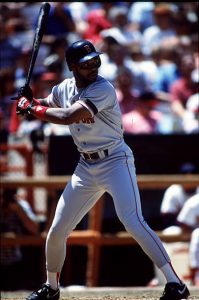
(Photo by Robert Beck/Icon Sportswire via Getty Images)
Number 13 – John Valentin
John Valentin was an underrated star of the Red Sox in the nineties. Valentin was good both offensively and defensively and was a clutch hitter. During his time in Boston, he turned the tenth unassisted triple play in Major League history, hit for the cycle and posted the highest WAR in the American League in 1995. In the postseason, Valentin batted .347/.407/.639/1.046, hitting five home runs and driving in 19 runs over 72 at-bats.
Unfortunately, Valentin experienced severe knee problems that shortened his career. His knees bothered him in the late-nineties, then he blew out his knee and only played 30 games over his final two seasons with the Red Sox. However, from 1994-97 Valentin averaged 17 home runs and 35 doubles per season while batting .303/.384/.492/.876.
Honorable Mentions: Alex Cora, Hanley Ramirez
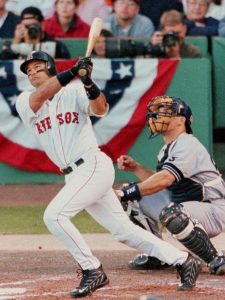
John Valentin homers off Roger Clemens in the 1st inning of game 3 of the ALCS in 1999.
Number 14 – Jim Rice
Jim Rice is the lone Hall of Famer in this group and has his number 14 retired by the Red Sox. He was quite possibly the most feared hitter in baseball for a decade. His rookie season he placed 2nd in the Rookie of the Year vote and third in the MVP vote. Things only went up from there.
From 1977-79, Rice put up one of the most dominant three-year stretches baseball has seen. Rice went over 200 hits each of those seasons and led the league in home runs twice. His 406 total bases in 1978 are a franchise record to this day. During that stretch, his average season was .320 with 41 home runs, 128 runs batted in, 207 base hits, 386 total bases, and a .972 OPS. He wasn’t all home runs as you can see by his hit total and the fact he hit 36 triples in those three seasons.
After a few good seasons, Rice had another monster season left in him in 1984. That year he led the league with 39 home runs and 126 runs batted in. His final top five MVP finish came in 1986 when he placed in third. In addition to his 1978 MVP Award, this was Rice’s fifth top-five MVP finish. His career tailed off in a hurry after that 86 season or he would have made the Hall of Fame much sooner. He still finished with nearly 2500 lifetime hits and a .298 batting average.
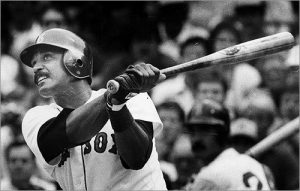
Number 15 – Dustin Pedroia
Who else at number 15 but our beloved leader at the keystone position. Pedroia has fallen on hard times lately with his knee problems, but he has had a wonderful career. Defying the odds of his small stature, Pedroia has won a Rookie of the Year, an MVP Award, a Silver Slugger, four Gold Gloves and made four all-star teams.
Pedroia followed up his Rookie of the Year campaign by leading the league in hits, runs scored and doubles in 2008. He even added some home run pop to his repertoire, hitting 17 out that season. In 2010 he was on pace for 20 when he broke his leg with a foul ball. He followed through on that pace the next season, smashing 21 “lasers” over the fence.
In his career, Pedroia has averaged 194 base hits per 162 games played. He is a career .300 hitter with extra-base power. In addition to that, he is a team leader and one of the best fielding second basemen in the game. Pedroia has never made more than seven errors in any season. The only season his fielding percentage dipped below .990 was when he was a September call-up in 2006; remarkable.
Honorable Mentions: Joe Dobson, Kevin Millar, Dennis Lamp, Earl Webb
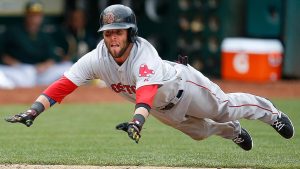
Featured picture from the Baseball Hall of Fame
